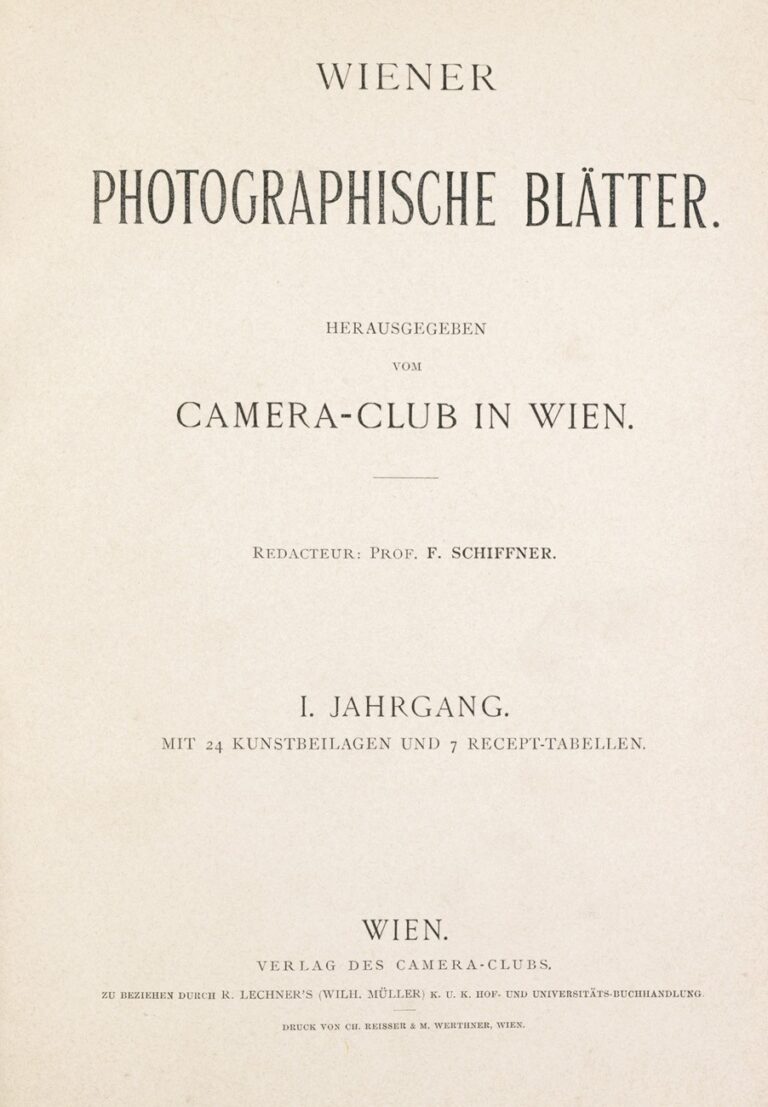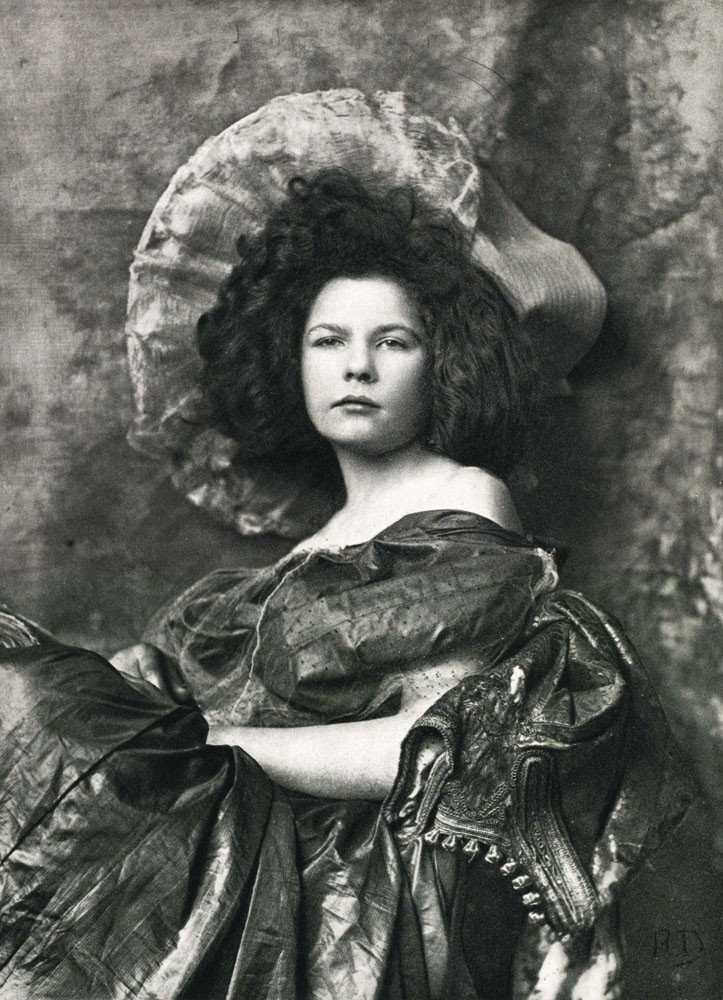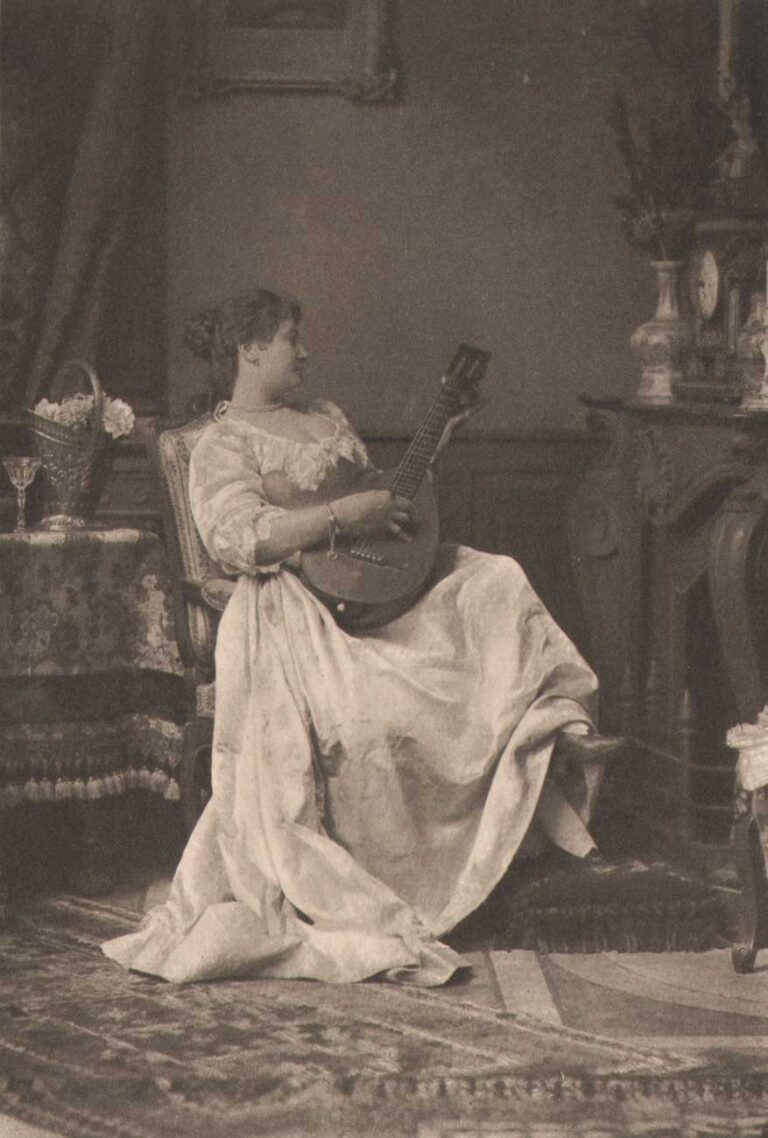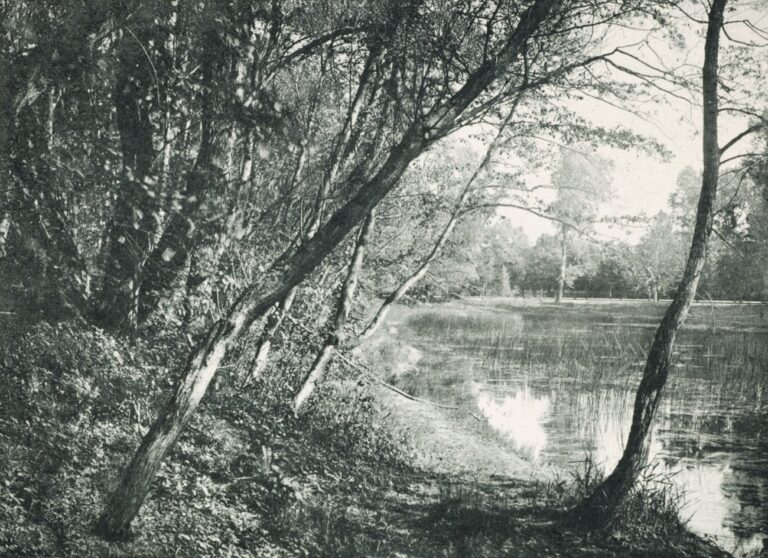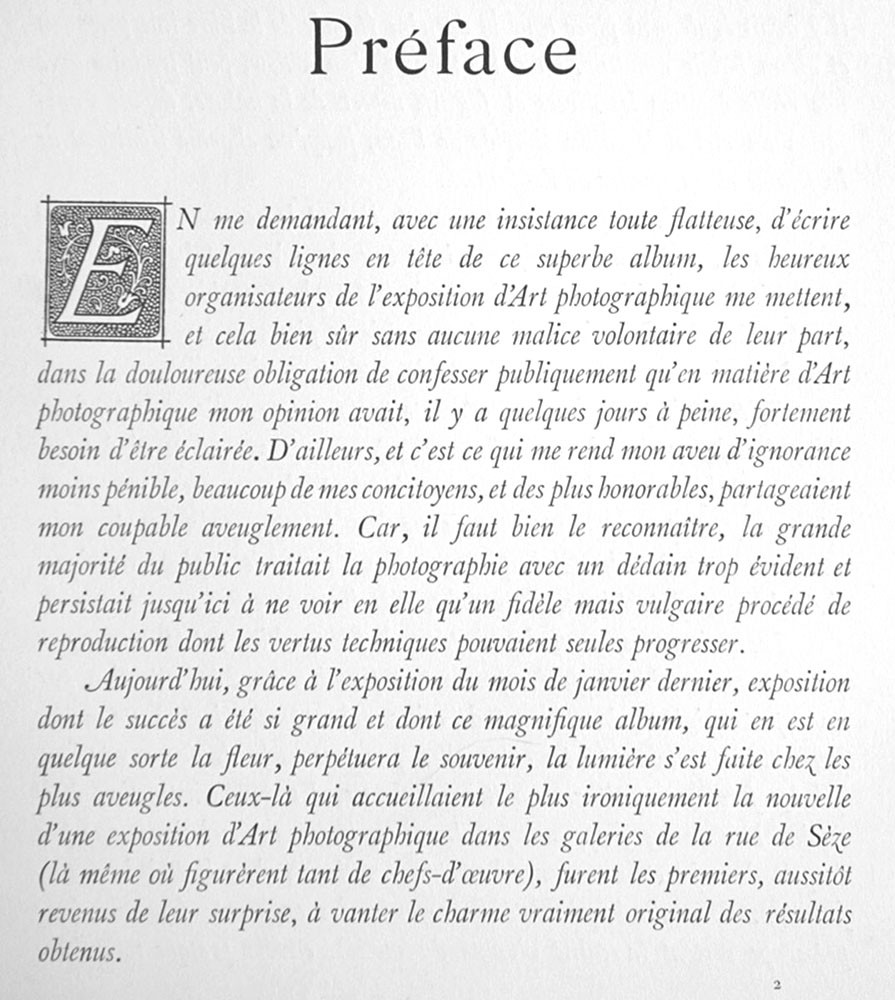
Preface: Armand Dayot
Preface Translation
Armand Dayot: inspecteur des Beaux-Arts, provides a three-page preface for this portfolio, which has been translated here:
When the enthusiastic organizers of the photo art show asked me – with flattering insistence – to write a few lines at the beginning of this superb album, they painfully compelled me – and this, of course, without any intentional mischief – to publicly confess that up to a few days ago my opinion on photographic Art required clarification. Moreover, and this is what makes my own admission of ignorance less painful, many of my fellow, and most honorable, citizens shared my reprehensible blindness. Because the great majority of the public treated photography with an all too obvious disdain and persisted in seeing it as a reliable but common means whose technical virtues could only progress.
Today, and thanks to last January’s show – that was so successful and whose fantastic album which is, in a way, the flower, that will perpetuate the memory – light has been given to the blind. Those who were most dubious at the news of a photographic art show in the galleries of the rue de Sèze, (where so many masterpieces appeared) were the first, immediately after having been won over, to praise the original charm of the exhibition.
Photography is and will probably always be only a graphic process, but one with the potential to produce masterpieces. But we needed – by the choice of the subject, the grouping of characters, the choice of poses, the selection of the countryside, and above all, with a specific printing of the plate – to demonstrate that photography, up to that point, had been in the hands of professionals only a kind of quasi-automatic process but it was possible to raise it to the level of a true art by freeing it from the yoke of traditional formulas. In a word, we needed, with the help of scholarly and daring essays to demonstrate that here there was a place for the fertile doctrine of free interpretation, and that a skilled amateur, who has the soul of an artist, can convey with real emotion, the various and fleeting moods of nature, from the turbulence of the sky and the clear limpid calm of the water to the disturbing charm of a woman and the smile of a child…..
Today, and we experienced it, and admittedly it was a success, thanks to the Photo Club’s clever initiative, which during a true International photo art exhibition, was able to group a series of typical pieces, among which a good deal were original and of unquestionable quality.
In this short preface, I made it a cruel rule but wise obligation not to mention the name of any exhibitor, I will content myself with mentioning some of the general characteristics of the works from abroad, and almost all, if I am not mistaken, photographed by amateurs – members of the Photo Clubs in England, America, Austria and Italy.
Visitors to the exhibition noticed that where groups of prints stood out at first sight because of an original appearance, most of them came from the same country as if they were linked together by a kind of mysterious link which made them immediately recognizable and classifiable. And this distinction was not so much a difference of the techniques used but rather the spirit of the subject and the national aesthetic trends of which it was the expression. By comparison with the French exhibitors’ submissions with works all perfectly executed, and where the lovely print, the rare print, can be easily found – the British amateurs with their skies often tormented like those by Turner and Constable — with their shaded and subtle coloring and their delicate atmospheres, sometimes with their triumphant attitudes, sometimes gently abandoned by their subjects with their elegant and fragile shapes – have interpreted their own vision, for they were probably and unconsciously influenced by the blazing memory of romanticism, by Millet’s, Hamerton’s, William Morris’s, by Burne Jones’s, and by Whistler’s tender and sublime twilights. A great number of Americans are subject to the same influences. As for Italians, they specialize a bit in the reminiscences of the Florentine Renaissance. The Austrian exhibition also has its own specific character, and the original prints I noticed made me think about reproductions in the style of Rotenhamer, Kaulbach, and Hans Mackart.
The influence of each country and race’s art doctrine appeared so clearly from the whole of the photographic works that were exhibited in the rue de Sèze Gallery, and I feel that it would not make any sense at all to persist in saying that Photography is only a mechanical reproduction process in which no part could give way to the spirit of invention and the emotion of the heart.
For my part, I declare that this very interesting show – curated with so much taste, and which is, I like to think, the prelude to a series of Photo Art international exhibits – it was filled with invaluable lessons for me. —Armand Dayot
